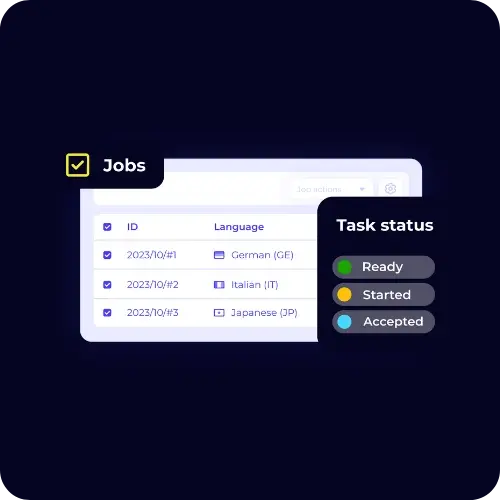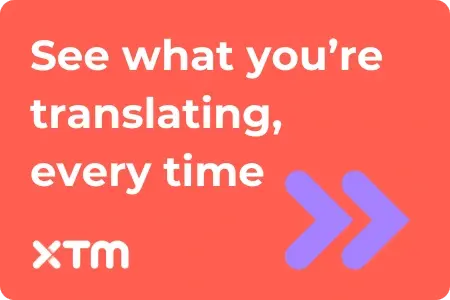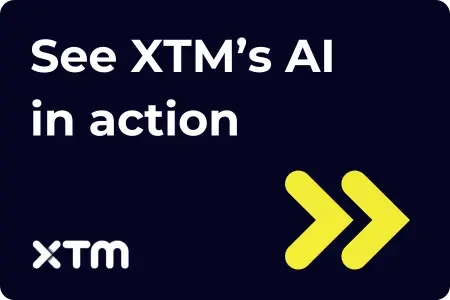XTM vs memoQ
Which is better?
memoQ works fine for basic translation projects. But modern teams need more. They need platforms that scale with their content, support complex workflows, and don’t slow down as they grow.
That’s where XTM Cloud stands out. It's built from the ground up for global localisation—cloud-native, automation-ready, and made to handle high volumes without extra infrastructure. You get transparent AI, real-time collaboration, and integrations that connect directly to your content systems.
No bottlenecks, no patchwork tools—just a platform that moves as fast as your business.
Book your 30-minute demo
Book your 30-minute demo
Trusted by teams at over 1,000 of the world’s leading organizations
Why XTM beats memoQ
Real cloud technology
XTM Cloud was born in the cloud. memoQ started as desktop software and tried to add cloud features later. This difference matters when your team needs to scale fast or work across multiple offices.
Clear AI decisions
XTM shows you exactly how its AI works. You can use your own API keys and stay in control. memoQ only added basic machine translation recently. You can't see how it makes decisions or control the process properly.
Sixty real connections
XTM Connect links directly to your CMS, code repositories, and marketing platforms. memoQ mainly handles files. This means your team does more manual work and wastes time moving content around.
The results only XTM can deliver
Whether you’re a localization manager, marketer, or product team, we streamline the entire process—saving time, reducing costs, and boosting quality
increase in translation quality
cost savings on external vendors
faster time-to-market
What problems each platform solves
Both tools handle translation work. But they serve different types of teams.
memoQ suits traditional translation agencies. It gives experienced translators detailed desktop tools and strong translation memory features. Perfect if you need lots of customisation for complex linguistic projects.
XTM Cloud handles modern business localisation. Marketing campaigns, product launches, technical documentation, and multimedia content all flow through AI-powered workflows. Translators get visual previews that help them produce better work.
memoQ keeps teams tied to older systems. XTM gives you cloud flexibility when localisation becomes crucial for your business growth.
XTM vs memoQ - quick feature comparison
Cloud design that grows with you
Today's translation teams manage thousands of projects across different departments. Your platform needs to handle this growth without slowing down.
memoQ started life as desktop software. The server features came later. This creates problems when you scale across big organisations. Teams struggle with system maintenance and complex deployments that need dedicated IT support.
It handles smaller teams with steady workloads just fine. But when you need to grow quickly or support multiple business units, the old design shows its age.
How XTM delivers proper cloud power
XTM Cloud began as a multi-tenant SaaS platform. This means automatic scaling, zero infrastructure headaches, and deployment options that match your security requirements.
Teams can launch new projects instantly and work across time zones without server limits. Scale from ten languages to fifty without changing your setup. The platform handles traffic spikes automatically while keeping performance smooth for everyone.
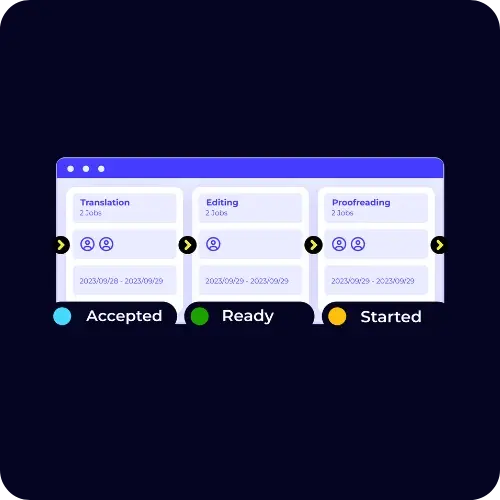
AI that you can actually understand
AI changes how teams handle translation quality, project routing, and content management.
memoQ recently added machine translation plugins for Google and DeepL, plus basic quality checks. These help with routine translation but lack the transparency and control that business teams need for compliance and brand protection.
No AI explanation features, limited workflow automation, and no support for your own API keys. Teams work without confidence scores or management controls that regulated industries require.
How XTM puts you in control
XTM Cloud's AI includes Language Guard for brand risk protection, SmartContext for visual previews, and Intelligent Score for quality assessment using industry standards.
The platform supports your own API keys, hosted language models, and full explanations for AI decisions. Teams see exactly why content was routed certain ways, what confidence scores mean, and how AI recommendations match brand guidelines.
This transparency matters for compliance reporting, quality audits, and building trust in automated workflows.
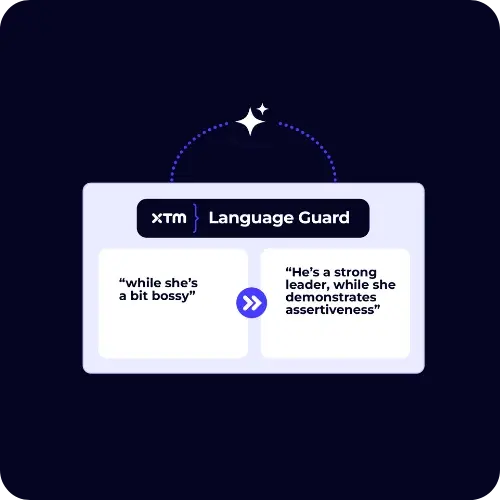
Visual context that actually helps
Visual context helps translators understand how their work looks to end users. This reduces mistakes and improves accuracy.
memoQ provides basic preview features for common file types. Translators can see some formatting context, but the system lacks support for complex layouts, multimedia content, or modern web applications where visual context matters most.
This limited visual support works for simple document translation but falls short for marketing materials, technical documentation, or user interface localisation where layout affects meaning.
How XTM shows context that counts
XTM's SmartContext provides real-time visual previews for sixty-five file formats. From mobile applications to complex InDesign documents, translators see exactly how text appears in websites, PDFs, marketing materials, and technical documentation.
This visual context removes guesswork about text expansion, layout limits, and design elements that affect translation choices. Translators make better decisions because they understand the final user experience.
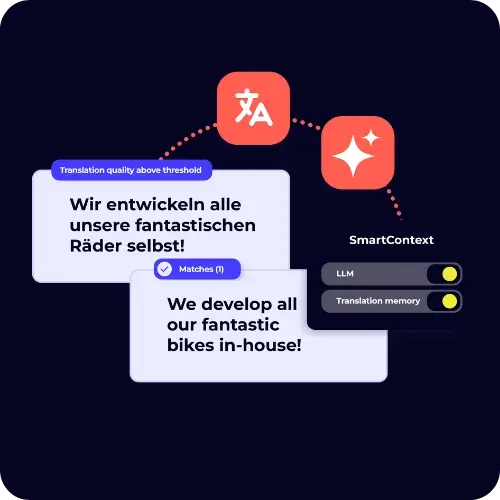
Business connections that link everything
Modern business localisation needs smooth connections between content management systems, development tools, and marketing platforms.
memoQ focuses mainly on file-based workflows with limited pre-built connections. Teams often need custom development or manual processes to connect localisation with their existing content systems.
This approach creates bottlenecks when scaling across multiple content sources or trying to automate publication workflows. Integration limits force teams to work around the platform rather than with it.
How XTM connects your content world
XTM Connect supports sixty-plus native integrations including CMS platforms, Git repositories, marketing automation tools, and business intelligence systems.
These connections allow automated content ingestion, real-time project updates, and smooth publication workflows. Teams can trigger translations directly from their CMS, automatically sync with development branches, and publish localised content without manual file handling.
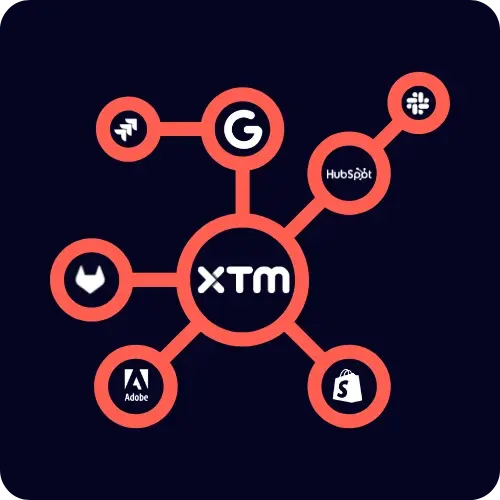
Workflow automation that fits your business
Workflow automation determines how translation projects move through different stages from content creation to final publication.
memoQ provides workflow capabilities designed around traditional translation processes. These workflows require heavy configuration and scripting for complex business requirements. Limited flexibility for organisations with established approval chains or regulatory processes.
Teams often need technical expertise to modify workflows or adapt to changing business requirements. This creates dependencies on specialised knowledge and slows down process improvements.
How XTM workflows match your processes
XTM's Workflow Editor allows organisations to create sophisticated automation matching their exact business processes. Teams can design custom approval chains, set up automatic task routing based on content type or language, and implement quality gates ensuring translations meet specific standards.
Smart workflow capabilities use AI to make routing decisions automatically. High-confidence translations skip certain review stages while complex content gets additional scrutiny. This automation reduces manual project management while maintaining quality controls.
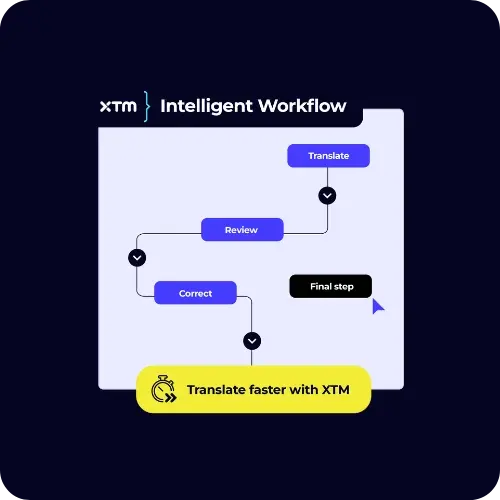



%20Request%20pricing%20v2.webp?width=1000&height=200&name=Book%20demo%20CTAs%20(1000%20x%20200%20px)%20Request%20pricing%20v2.webp)
